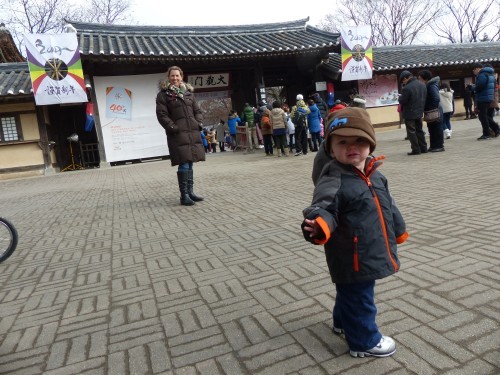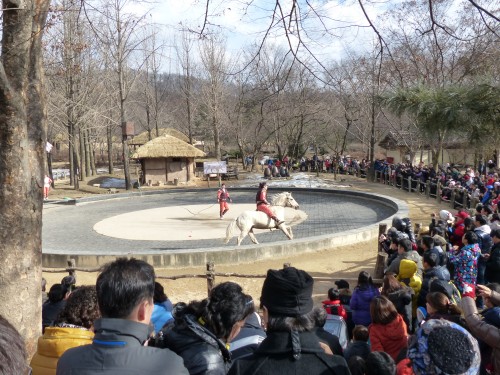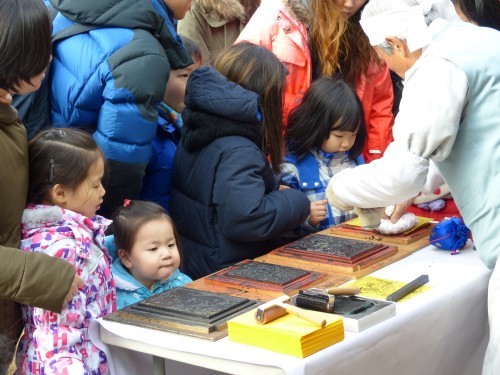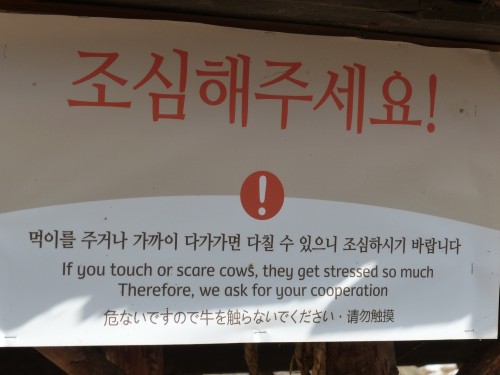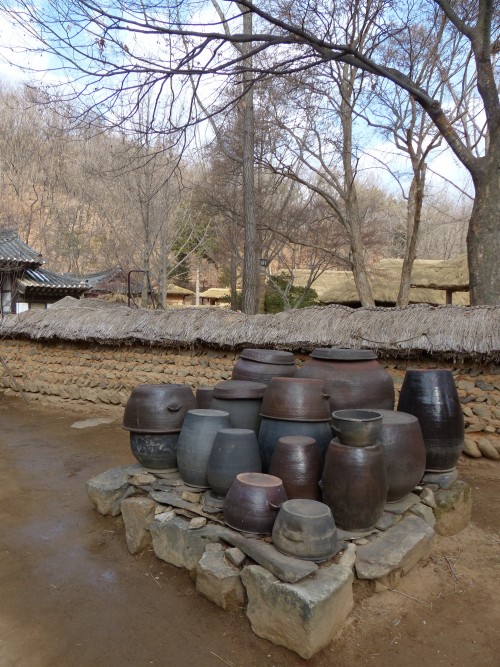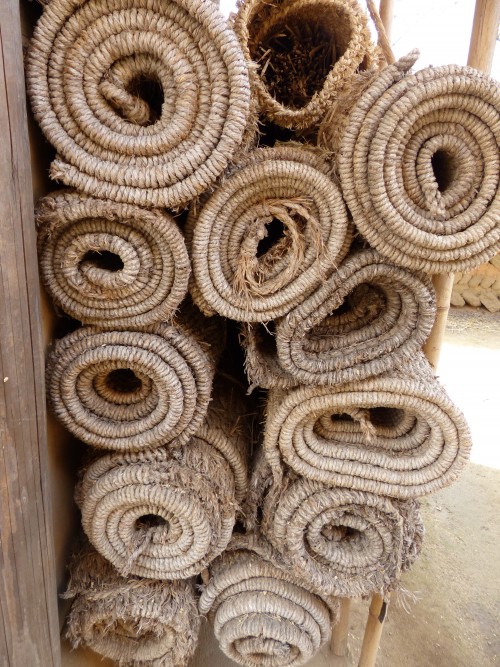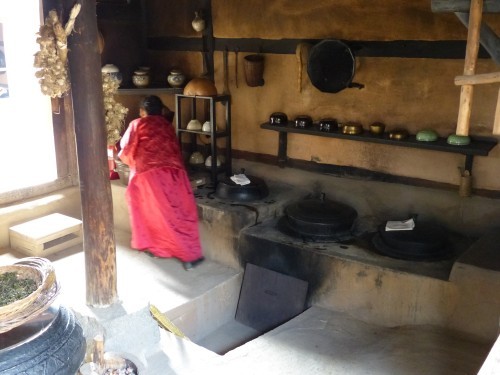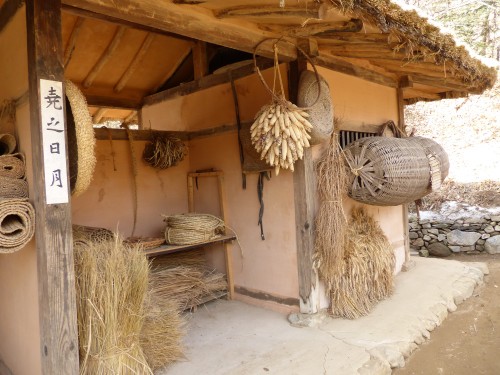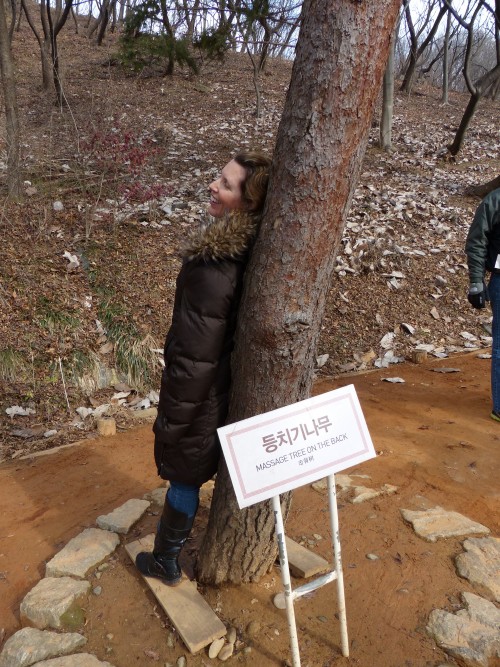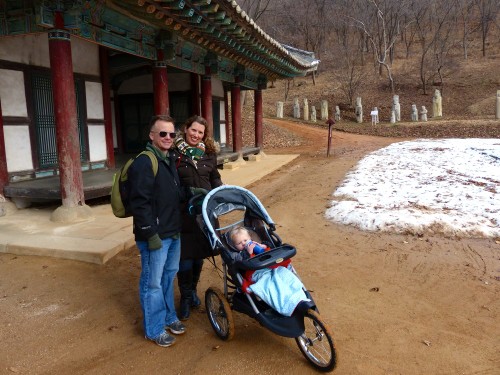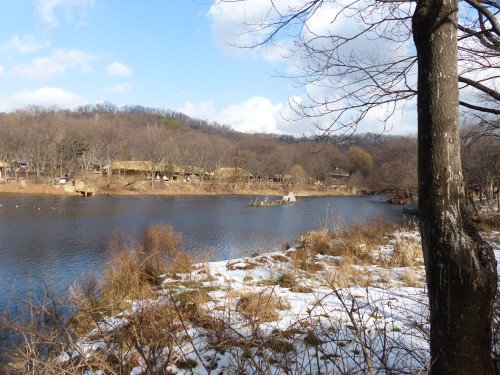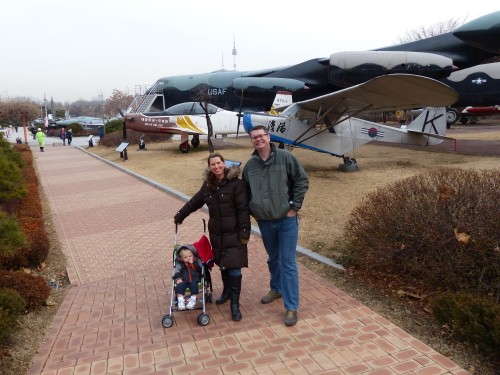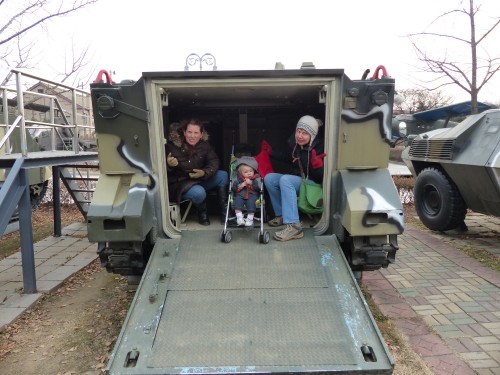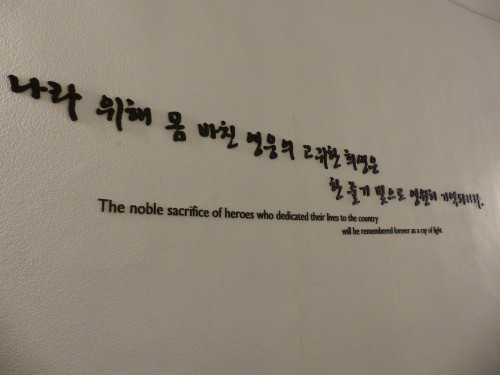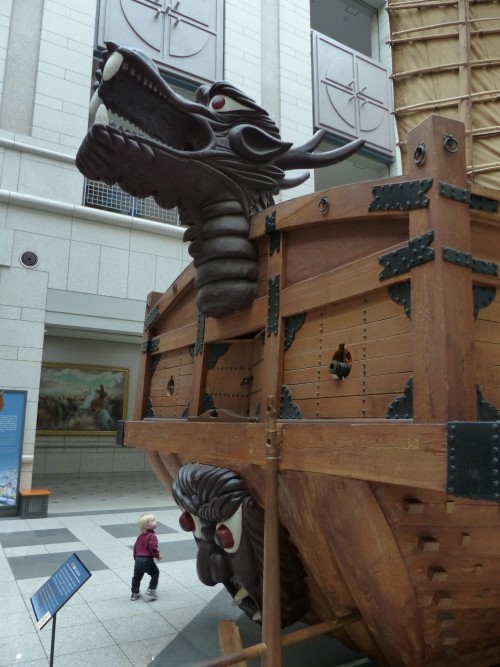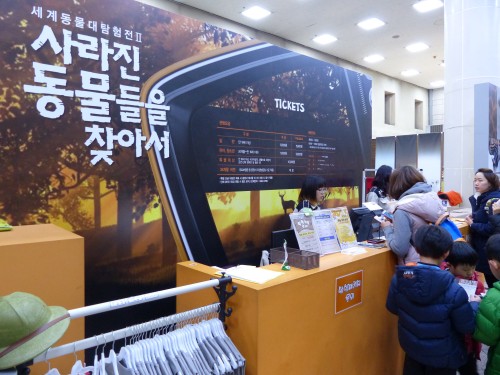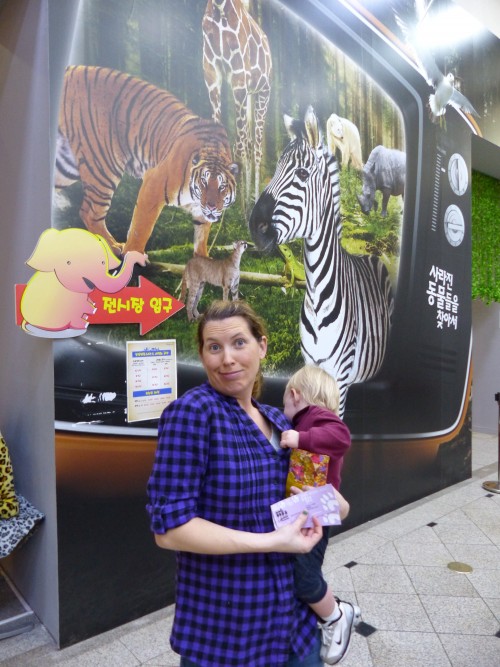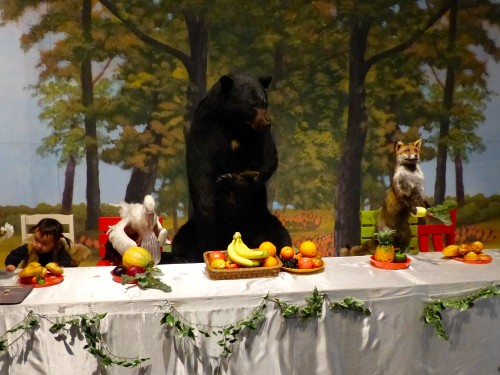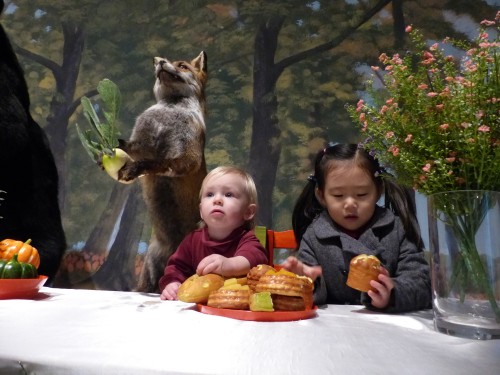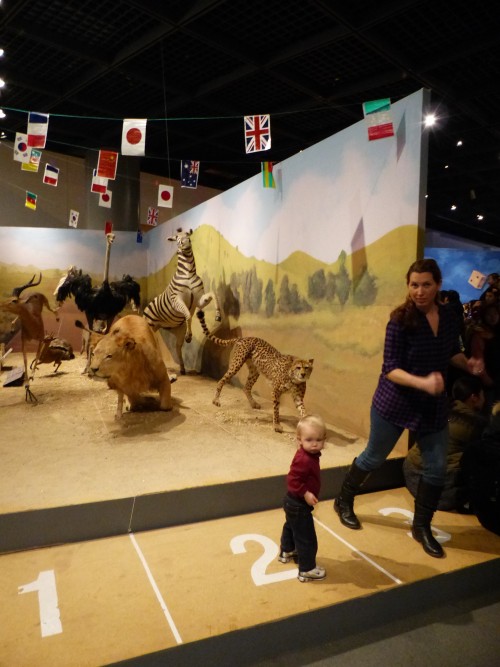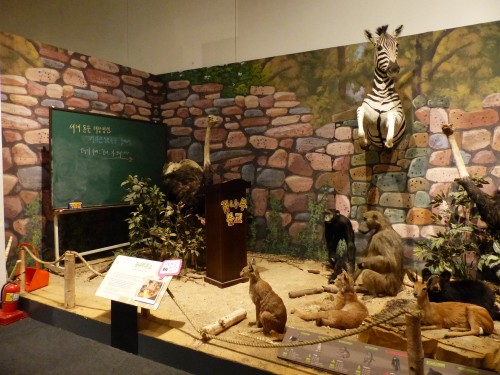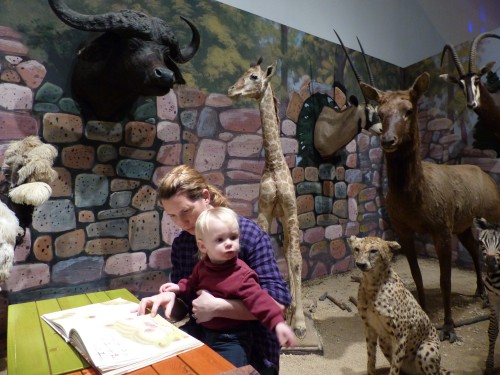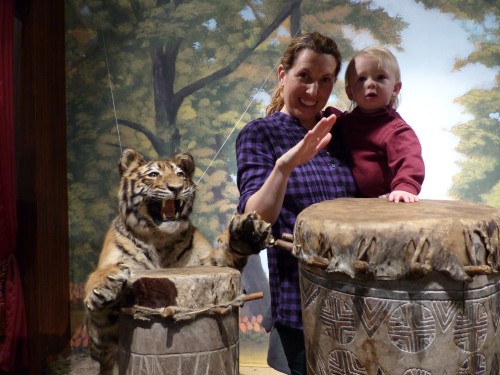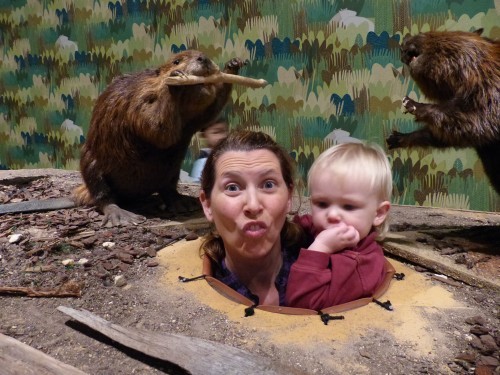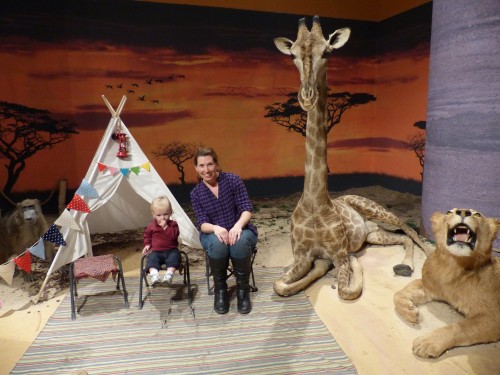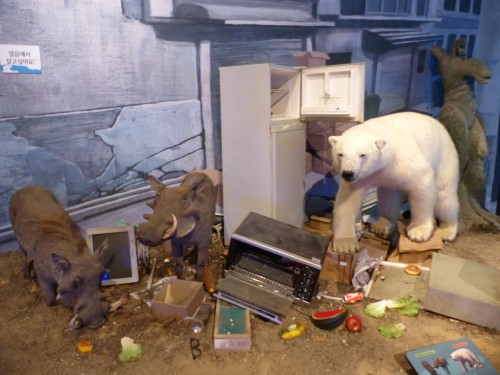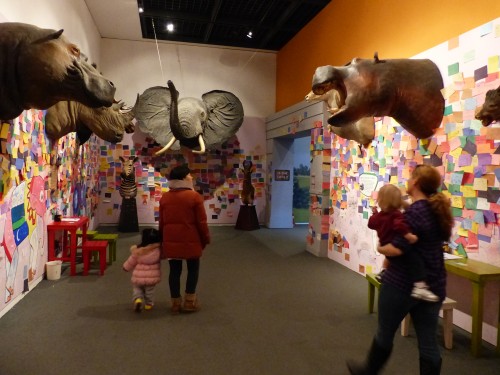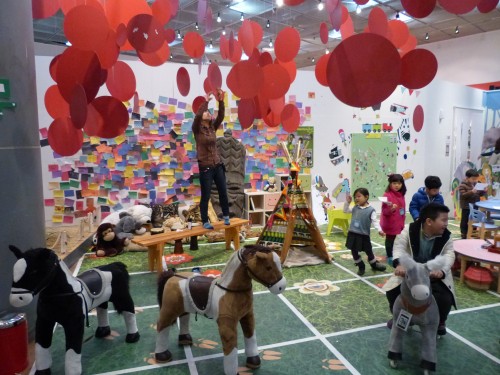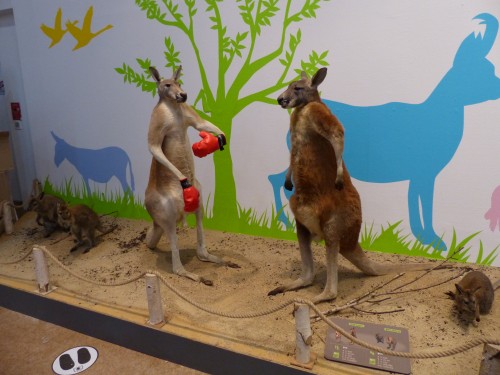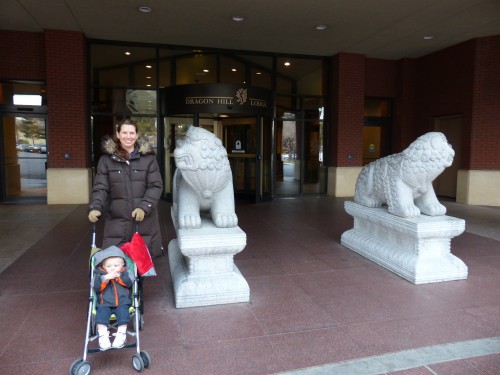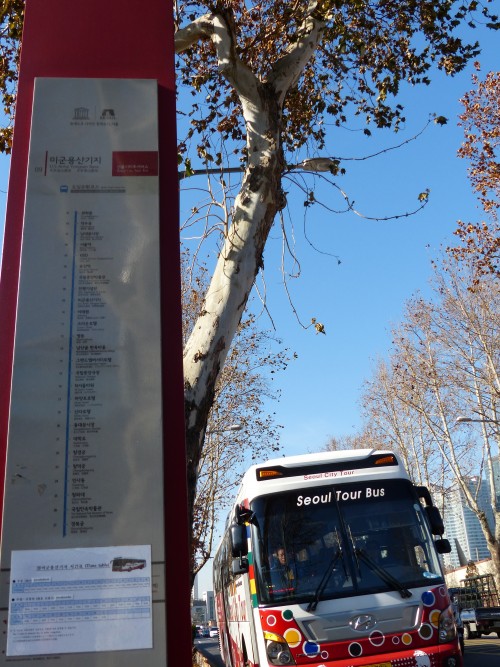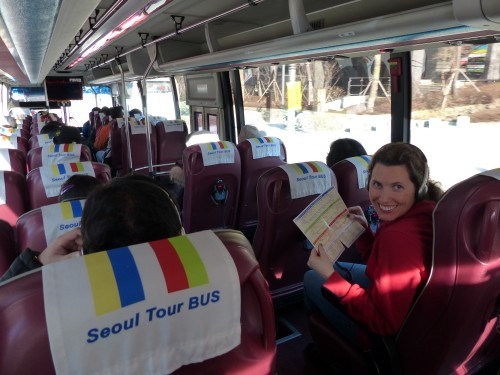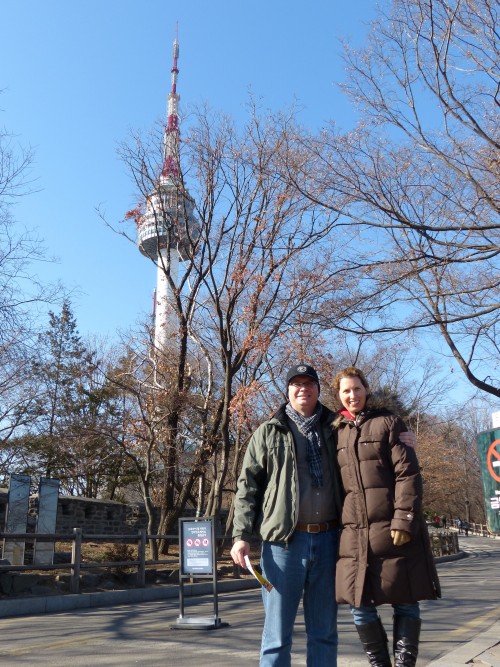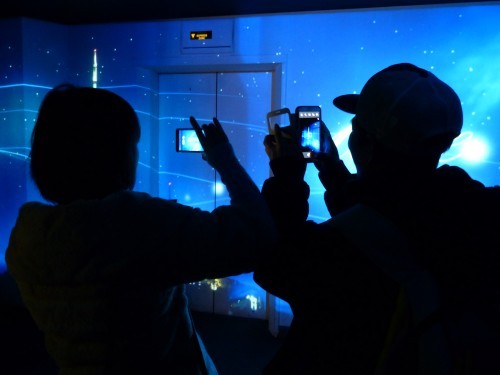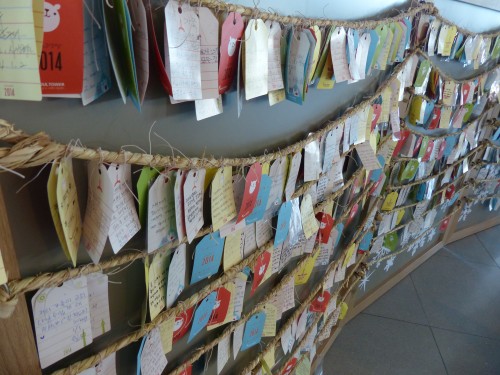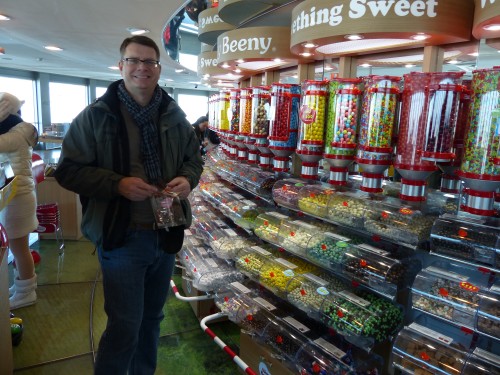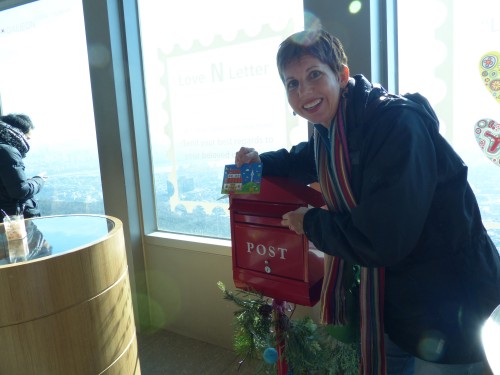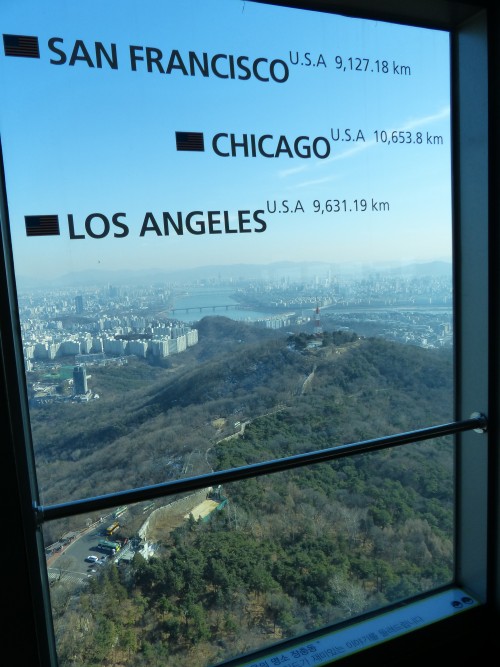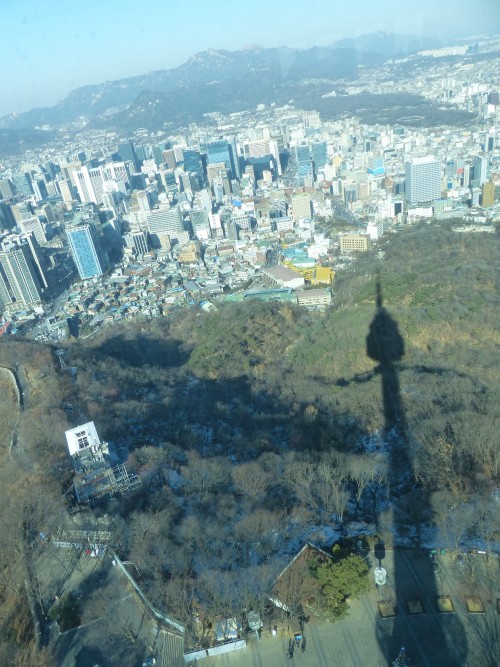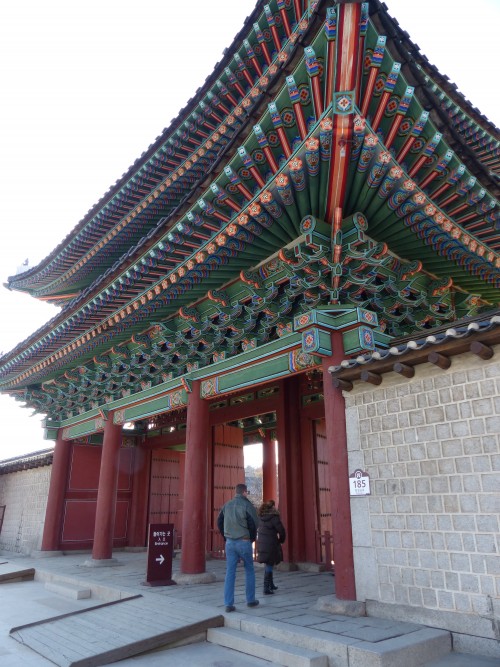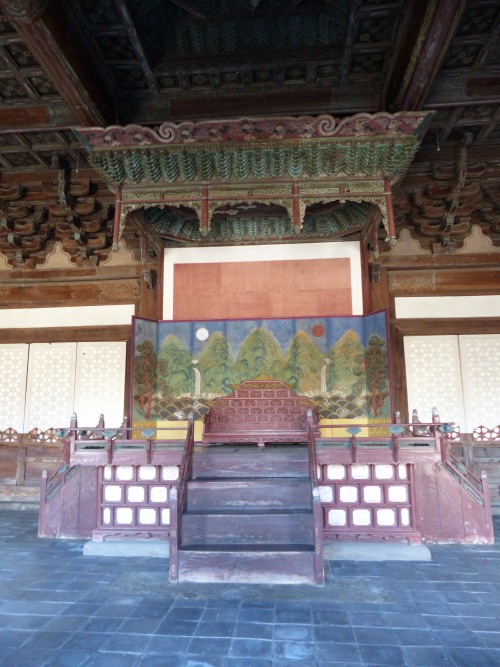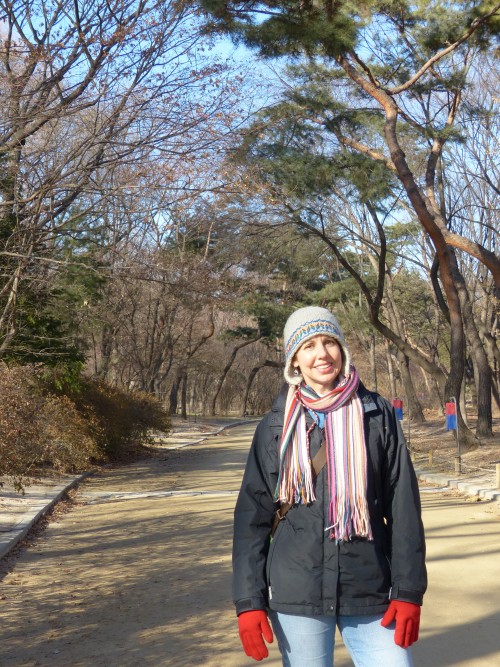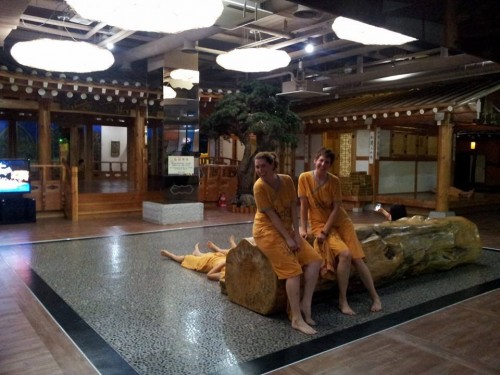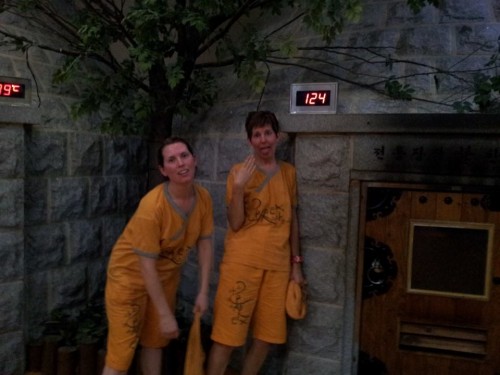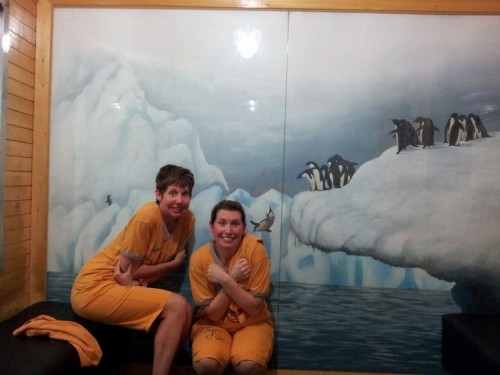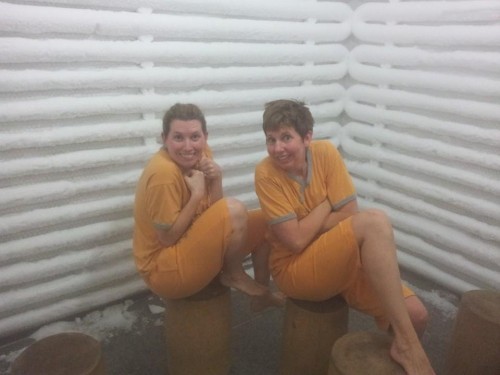Before heading to Seoul, the Dents and the Warrens visited one final cultural attraction: The Korean Folk Village. It’s called THE Korean Folk Village, but I’ve heard there are many. The brochure says, “Happy coexistence with pleasant tradition!”
Kind of the like the Korean version of Colonial Williamsburg, this village featured historical interpreters demonstrating what life was like in a bygone era. Here, Korea’s last imperial dynasty – the Joseon period – has been recreated “on a 243-acre site regarded as a propitious location according to the principles of feng shui, with a river flowing in front of it and a mountain behind it,” the brochure explains.
Here’s a rundown of the Joseon era, from Wikipedia:
Joseon (Korean: 조선; Hanja: 朝鮮; also Chosŏn, Choson, Chosun, Cho-sen), was a Korean state founded by Taejo Yi Seong-gye that lasted for approximately five centuries, from July 1392 to October 1897. It was founded following the aftermath of the overthrow of the Goryeo Dynasty in what is today the city of Kaesong. Early on, Korea was retitled and the capital was relocated to modern-day Seoul. The kingdom’s northernmost borders were expanded to the natural boundaries at the Amnok and Duman rivers through the subjugation of the Jurchens. Joseon was the last dynasty of Korean history and the longest-ruling Confucian dynasty.
During its reign, Joseon consolidated its effective rule over the territory of current Korea, encouraged the entrenchment of Korean Confucian ideals and doctrines in Korean society, imported and adapted Chinese culture, and saw the height of classical Korean culture, trade, science, literature, and technology. However, the dynasty was severely weakened during the late 16th and early 17th centuries, when invasions by the neighboring states of Japan and Qing nearly overran the peninsula, leading to an increasingly harsh isolationist policy for which the country became known as the Hermit Kingdom. After the end of invasions from Manchuria, Joseon experienced a nearly 200-year period of peace.
However, whatever power the kingdom recovered during its isolation further waned as the 18th century came to a close, and faced with internal strife, power struggles, international pressure and rebellions at home, the Joseon Dynasty declined rapidly in the late 19th century.
The Joseon period has left a substantial legacy to modern Korea; much of modern Korean etiquette, cultural norms, societal attitudes towards current issues, and the modern Korean language and its dialects derive from the culture and traditions of Joseon.
Strolling through the village on New Year’s Eve, I joined the crowd offering up wishes for 2014. The sign said: “Tie your wishes onto the elaborately piled up stone tower. The wishes hung from the straw rope are burnt along with sheaves of rice (Dalh-jib) for the first full moon of the new year and go up to the sky.”
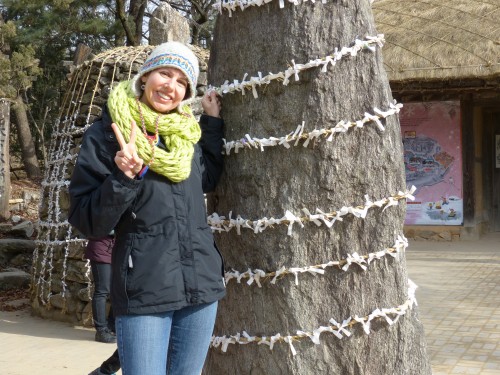
The village comprises 260 traditional houses relocated from various regions of Korea. There were opportunities to weave shoes out of straw, operate a millstone, create a silkscreened print, make a kite or fan, and participate in many other workshops, including the “experience of government office implementation of punishment,” which we missed, unfortunately.
We were encouraging Will to say “moo” to the cow, while a Korean family was coaching their baby to say “oo-may.” No wonder the cow wasn’t looking at Will! It didn’t speak English.
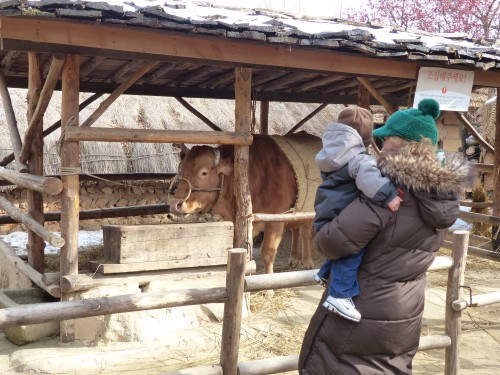
The Korean Folk Village has also served as a shooting location for popular TV dramas, so many visitors come as part of their “Han Ryu” (Korean Wave) cultural tour. I had never heard of this Korean Wave phenomenon, but apparently it’s a reference to the popularity of South Korean culture (such as K-Pop music videos) and the tourism that follows it. Here’s Tony, joining the Korean Wave and posing with Jang Geum from the K-Drama “Jewel in the Palace.”
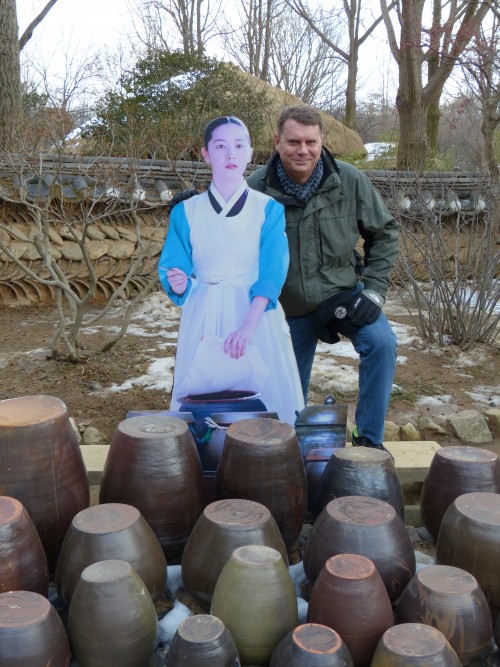
According to the DramaFever website:
Jewel In the Palace is arguably the first successful historical feminist drama, retelling Jang Geum’s rice-to-riches story during the Chosun Dynasty 500 years ago. Jewel is the real story of Jang Geum, a young girl who is the first woman to become the King’s supreme royal physician in a male-dominated society. Behind her child-like eyes lies an ambitious working girl with a 21st century mindset. See how Jang Geum goes from being a virtually abandoned child to becoming the King’s doctor. This unforgettable drama of epic proportions tells the touching and tear-jerking story of a true underdog.
Random shots of the folk village.
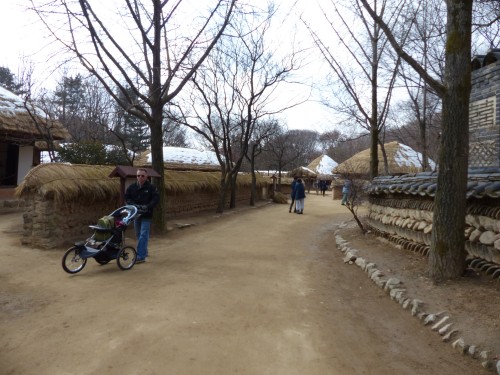
Check out my flickr set if you want to see more photos!
Well, it’s no secret that I love this kind of stuff. If I could quit my real job, dress up in period costume and play act all day, I would do it! Not sure what role I would play at The Korean Folk Village. Any ideas?

